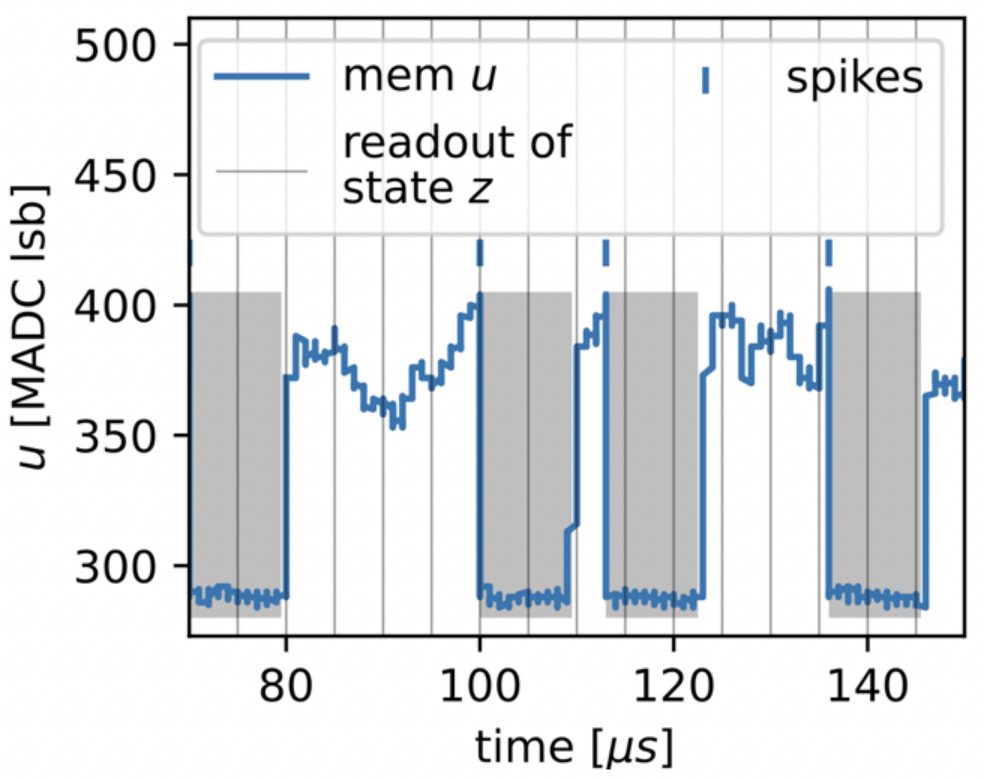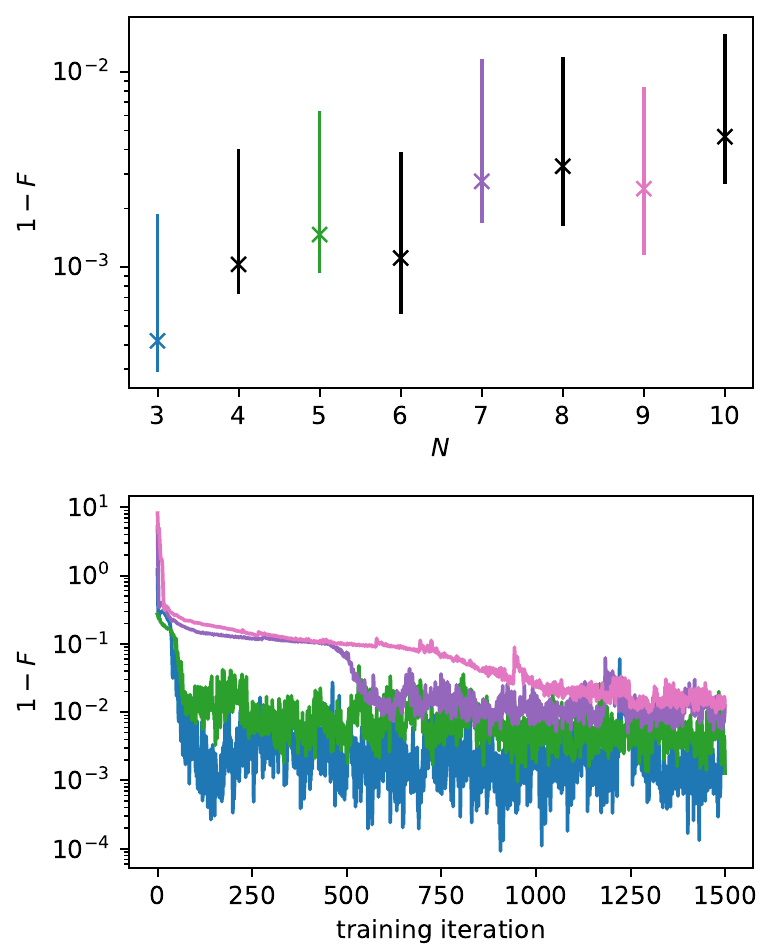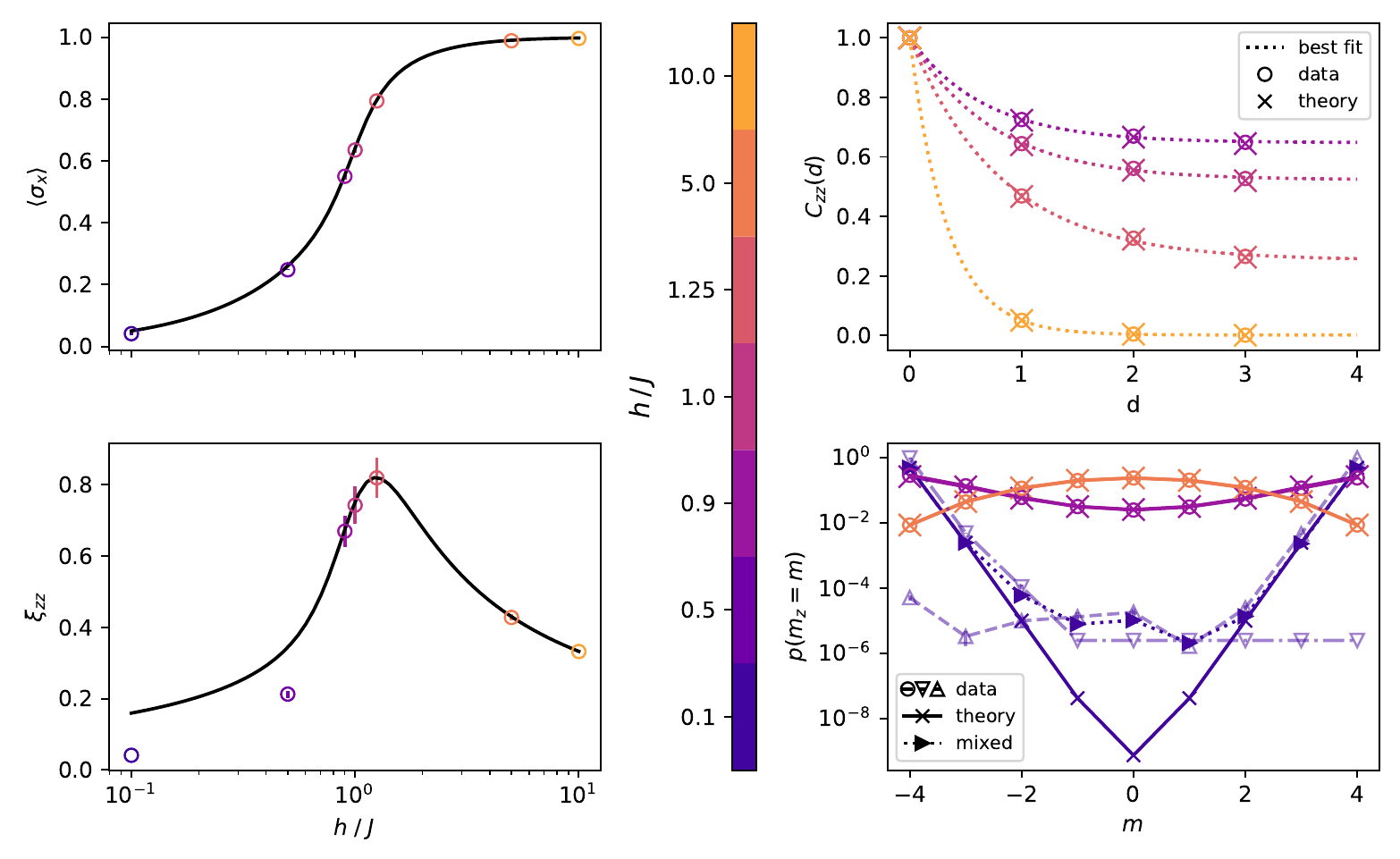Variational learning of quantum ground states on spiking neuromorphic hardware [Blogpost]
Variational learning of quantum ground states on spiking neuromorphic hardware
Neural quantum states with neuromorphic hardware?
A flood of work on neural quantum states (NQS) in the past years have shown their ability to model quantum many-body systems, often in remarkably scalable fashion. Prominently, restricted Boltzmann machines (RBM) have been successfully used for variational ground state search in quantum spin models. However, estimating observables through sampling from these generative models relies on Markov chain Monte Carlo methods, which in these high-dimensional spaces often suffer from long correlation times or fail to capture multi-modal distributions.
With this work we address these challenges by leveraging a brain-like sampling process in a spiking neural network (SNN) which thereby probabilistically encodes a quantum spin state. By gradient-based minimization of the energy expectation value the network variationally learns ground states of a given Hamiltonian. We implement this approach with the BrainScaleS-2 neuromorphic chip which emulates a SNN, enabling inherently parallel sampling independent of the network and system size. Finally, we study the performance and limitations for the quantum Ising model.
Spiking sampling like in the brain!
 Figure 1: Membrane potential of a spiking neuron.
Figure 1: Membrane potential of a spiking neuron.
The dynamics of spiking neurons can be naturally interpreted as sampling from a high-dimensional binary space.
The activity of each neuron
Encoding and variational learning for quantum ground states
 Figure 2: Probabilistic encoding of quantum spins in two-layer network.
Figure 2: Probabilistic encoding of quantum spins in two-layer network.
We assume a stoquastic Hamiltonian in which case the ground states can be expressed with real wave function coefficients such that probabilistic modeling becomes straight forward:
 Figure 3: Neuromorphic chip in the loop.
Figure 3: Neuromorphic chip in the loop.
For the variational method we exploit the Boltzmann character of the distribution and derive the analytical gradients with respect to the network parameters, e.g.
Results and limitations
We have tested our method for searching ground states of the antiferromagnetic quantum Ising model
 Figure 4: Quantum fidelity as function of system size and training iteration.
Figure 4: Quantum fidelity as function of system size and training iteration.
Furthermore, we studied the quantum phase transition as occurring as a function of the transverse field
 Figure 5: Phase transition in the quantum Ising model and symmetry breaking in the ferromagnetic phase.
Figure 5: Phase transition in the quantum Ising model and symmetry breaking in the ferromagnetic phase.
For system sizes N > 10, we observed a significant drop in the representational power of our neuromorphic implementation. We investigated the possible causes for this and found that the currently available parameter stability on BrainScaleS-2 leads to a limited accuracy of gradients. This is the main limitation that has to be overcome in order to scale up to larger system sizes.
Much more information can be found here